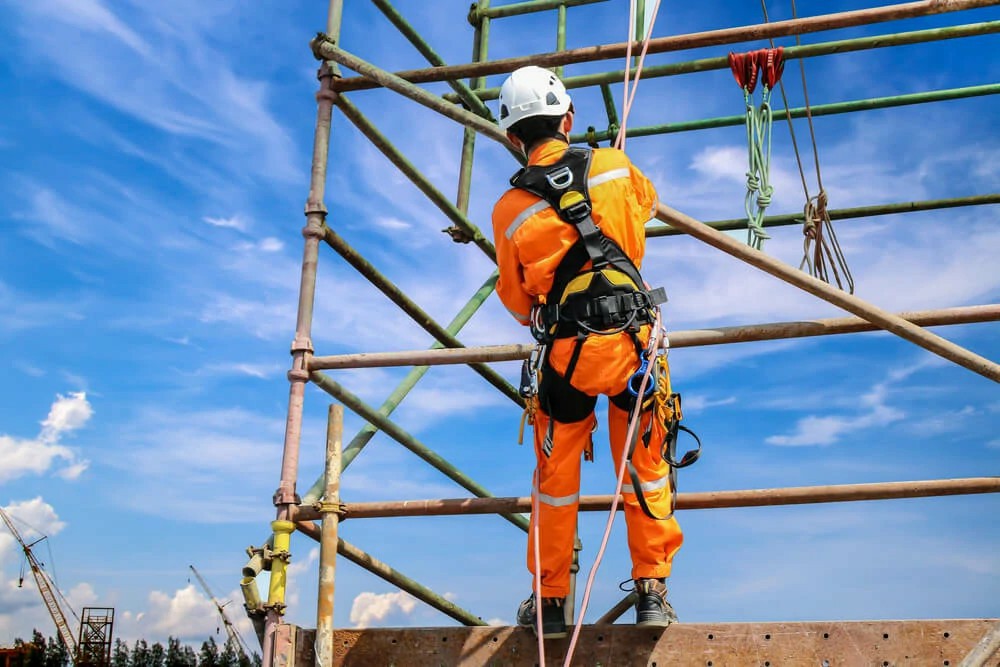Transforming Workplace Safety: The Revolutionary Impact of Virtual Reality on Working at Heights Training
In today's fast-paced work environments, safety is a top priority, especially for industries that involve working at heights. Traditional training methods often fall short in providing realistic scenarios that workers may face while on the job. However, the advent of virtual reality (VR) technology is ushering in a new era for Working at Heights training. This blog will explore how VR is revolutionizing safety training, enhancing learning retention, providing hands-on experience, and significantly reducing training costs.
Understanding the Importance of Working at Heights Training
Working at heights can be fraught with risks, including falls, which are a leading cause of workplace injuries and fatalities. Effective Working at Heights training is crucial for ensuring that workers are prepared to operate in high-risk environments safely. The training covers essential safety protocols, proper use of equipment, hazard recognition, and emergency response techniques.
The Role of Virtual Reality in Enhancing Working at Heights Training
Virtual reality offers an innovative platform for conducting Working at Heights safety courses. Here are some key enhancements VR brings to the table:
1. Realistic Simulations of High-Risk Environments
- VR technology provides immersive simulations that replicate real-world scenarios in high-rise buildings, construction sites, and other elevated workspaces.
- Trauma-inducing situations such as equipment failure or sudden inclement weather can be recreated within a safe environment, allowing trainees to experience and react to emergencies.
2. Enhanced Learning Retention
- Research shows that immersive learning environments significantly boost knowledge retention compared to traditional lectures or online courses.
- Through VR, workers are more engaged, which fosters better understanding and retention of critical safety information.
3. Hands-On Experience Without Physical Risk
- VR training allows workers to practice skills such as ladder ascension, harness fitting, and using safety gear without the danger associated with actual heights.
- Participants can repeatedly practice various scenarios until they feel confident, mitigating fears and improving performance upon actual deployment.
4. Cost Reduction in Training Programs
- Traditional training often requires significant investment in equipment, travel, and on-site hazards management. VR training reduces these overheads by minimizing physical resources needed.
- Additionally, it allows for scalability; multiple employees can engage with the VR module at their convenience, reducing downtime associated with in-person training sessions.
Case Studies Showcasing Successful VR-Based Training Programs
Several organizations have successfully integrated VR into their Working at Heights courses. For example:
Case Study 1: A Major Construction Firm
This company implemented VR training for its employees involved in high-rise construction. They noted a 50% reduction in safety incidents and increased employee confidence on site within months of using VR simulations.
Case Study 2: An Energy Sector Leader
After incorporating VR training into their safety protocols, this organization reported higher compliance with safety measures, attributed to improved knowledge retention. Workers felt better prepared for real-life situations, which significantly reduced near-miss incidents.
Integrating VR into Your Safety Programs
For organizations looking to enhance their Working at Heights Certification protocols, implementing a VR-based program can be a game-changer. Here are steps to get started:
- Assess Needs: Evaluate your current training programs and identify gaps that VR technology can fill.
- Select a VR Provider: Choose a reputable provider with experience in safety training and VR technology.
- Customize Content: Work with your provider to develop customized VR scenarios that reflect the unique risks faced by your workforce.
- Train the Trainers: Ensure your trainers are well-versed in the VR technology and can effectively guide workers through the sessions.
- Gather Feedback: Continuous improvement is key. Collect feedback from trainees to refine the VR training experience.
Long-Term Benefits of Immersive Learning Technology
Investing in VR technology for Working at Heights training yields long-term benefits, including:
- Increased Worker Safety: More effective training leads to improved safety practices and reduced accident rates.
- Enhanced Employee Morale: Workers appreciate organizations that invest in their safety and personal development.
- Regulatory Compliance: Companies can maintain compliance with safety regulations through ongoing, effective training.
Conclusion: Embracing the Future of Safety Training
Virtual reality is not just a trend; it is a powerful tool that is transforming the way we approach Working at Heights Certification and safety training. By integrating VR into your training programs, you can enhance employee learning, ensure safer workplaces, and achieve significant cost savings.
Ready to elevate your training? Explore the benefits of Working at Heights Course Online or contact us at [email protected] for more information!



 349,500 Offered Certificates
349,500 Offered Certificates
 24/7 Online Training
24/7 Online Training
 Money Back Guarantee
Money Back Guarantee
 Fully Accredited Courses
Fully Accredited Courses
